Designed for those riders who set their sights beyond the horizon, the Vulcan 1700 Voyager offers everything needed for comfortable long-distance touring with or without a passenger. Offering a metric alternative to V-Twin tourers, the Vulcan 1700 Voyager combines Kawasaki reliability with the performance, comfort and amenities that long-distance touring riders demand. While any motorcycle can be ridden long distances if the rider is determined, only a special few truly deserve to be called a touring cruiser. The Vulcan® 1700 Voyager® ABS motorcycle is one of those rare machines. It offers a stylish alternative to run-of-the-mill V-twin tourers, combining Kawasaki reliability with the performance, V-twin feel, comfort and amenities that a long-distance touring rider and passenger demand. Its torquey 1,700cc V-twin powerplant delivers muscular performance. And when mixed with Kawasaki's legendary engineering and reputation for dependability, you've got a motorcycle that will carry you reliably from coast to coast - and back again.
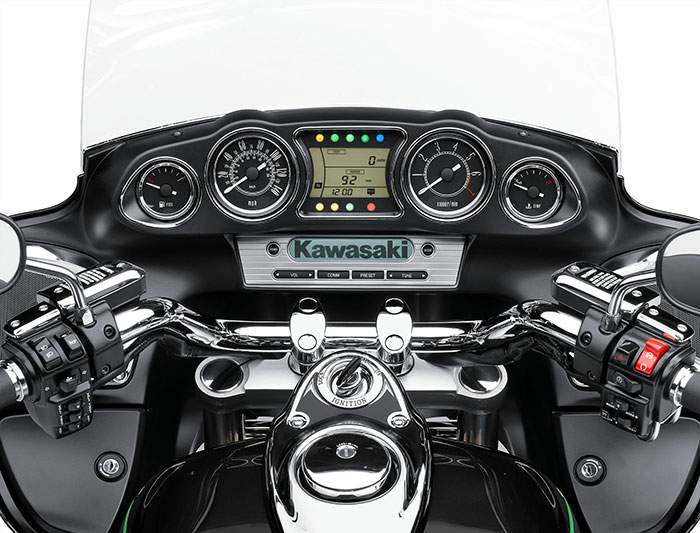
HIGHLIGHTS " Powerful 1,700cc V-twin " Six-speed transmission " Kawasaki's sophisticated K-ACT II ABS braking system " Electronic cruise control " Stylish, frame-mounted fairing provides superior wind protection " Superb comfort for rider and passenger " Lower color-matched fairings increase wind protection " Large, color matched trunk holds two full-face helmets " Weatherproof, lockable, color matched, top-opening hard saddlebags " Feature-rich, AM/FM/WB audio system with iPod® and SiriusXM® radio compatibility " Navigation Audio Prompt Capability plays voice prompts from Garmin® Zumo® 600/665 GPS devices through the motorcycle's audio system " Low 28.7" seat height " Compact and upright ergonomics improve rider comfort for all-day rides " Includes a best-in-class 36-month limited factory warranty! TOURING COMFORT Comfortable, long-distance touring is all about a bike's carrying capacity and comfort of both a rider and passenger for days - or even weeks - in the saddle. Voyager features a large frame-mounted fairing, beautifully integrated luggage that stows your gear, an extremely comfortable saddle, electronic cruise control, and high-fidelity sound system all to offer the perfect platform to watch the scenery change along with the time zones. As if that weren't enough, the Voyager also includes the K-ACT II anti-lock/integrated braking system while still keeping the MSRP lower than comparable models. KAWASAKI K-ACT II ABS Since touring cruisers can encounter inclement weather on the road, the Voyager's braking system is enhanced by the Kawasaki Advanced Coactive-braking Technology (K-ACT II) ABS system. K-ACT II uses advanced electronics to translate the rider's braking inputs from both the front lever and rear pedal into smooth, balanced deceleration and provide maximum stopping performance. The front lever also activates the rear brake, and the rear pedal also engages the right front caliper. K-ACT II helps ensure all this happens seamlessly and efficiently, and the second-generation system uses the same smaller, lighter ABS unit and faster, higher-spec brake ECU found on the Kawasaki Concours®14 ABS motorcycle for smooth, precise operation. The K-ACT II coactive function does not engage when braking is applied at speeds below 12mph, and the ABS function is automatically disengaged at speeds below four mph. POWERTRAIN There's much more on the unique technology front, including Kawasaki's fully electronic throttle valve system, which works in concert with the Voyager's Digital Fuel Injection (DFI®) system to enhance engine response without diluting the big 1,700cc V-twin's distinctive throb. The system also helps the ECU deliver ultra-precise air/fuel metering and more accurate idle speed control. The setup utilizes an Accelerator Position Sensor (APS) and Throttle Position Sensor (TPS) that feed data to the ECU, which adjusts the throttle plates to tailor intake airflow accordingly. The system offers natural throttle feel, as APS is activated by a throttle-body pulley connected by cables to the throttle grip. Kawasaki was the first to provide, as standard equipment, an effective air management system to help increase rider comfort when stopped. The primary component of the Kawasaki Air Management System (KAMS) routes radiator heat to the ground, below the engine, while the secondary part of the system draws heat away from the rear cylinder and exhaust pipe and directs it to the ground on the left side of the motorcycle. This system is particularly effective in warm weather while stopped in traffic or for extended periods of low-speed operation, such as during staging for group rides or parades. All of this technology is a marvel of engineering and functionally capable. Featuring liquid cooling, four-valve cylinder heads and a single overhead cam setup for big-time mid-range power, the engine utilizes a pair of big pistons to pump out a massive quantity of torque over an unbelievably wide rpm range - a key to this engine's superb flexibility. There's a boatload of torque located throughout the RPM zone where riders will spend the most time - and more than enough from idle all the way to 5,000rpm, so major-league, arm-straightening thrust is available every time you twist the grip. Voyager's fuel injection and exhaust systems are tuned to deliver peak torque and horsepower at the optimal rpm for an open-road tourer. Voyager's mufflers have excellent sound quality and a tapered, classic look. Additional touring functionality is provided by Voyager's beefy but easy-to-squeeze hydraulic clutch, which features six damping springs and progressive three-stage engagement for easier shifting under hard acceleration. Voyager touring cruiser employs innovative technology matched with essential touring features such as electronic cruise control and a six-speed transmission with overdrive fifth and sixth gears. The cruise control is easily operated from the right handlebar and can be activated between 30 and 85mph in any of the top four gears. Conveniently, the cruise control can be disengaged by applying the front brake lever, clutch lever, rear brake pedal, or by manually rolling off the throttle. Featuring overdrive ratios and a super strong carbon fiber reinforced drive belt, the Voyager's drivetrain is ideally suited to its role as a relaxed touring machine. Its tall fifth and sixth gears contribute to relaxed riding and better fuel economy at highway speeds, and its carbon fiber reinforced drive belt has a 40-percent higher tensile strength than the latest Kevlar units, allowing use of a 28mm belt that minimizes drivetrain width.
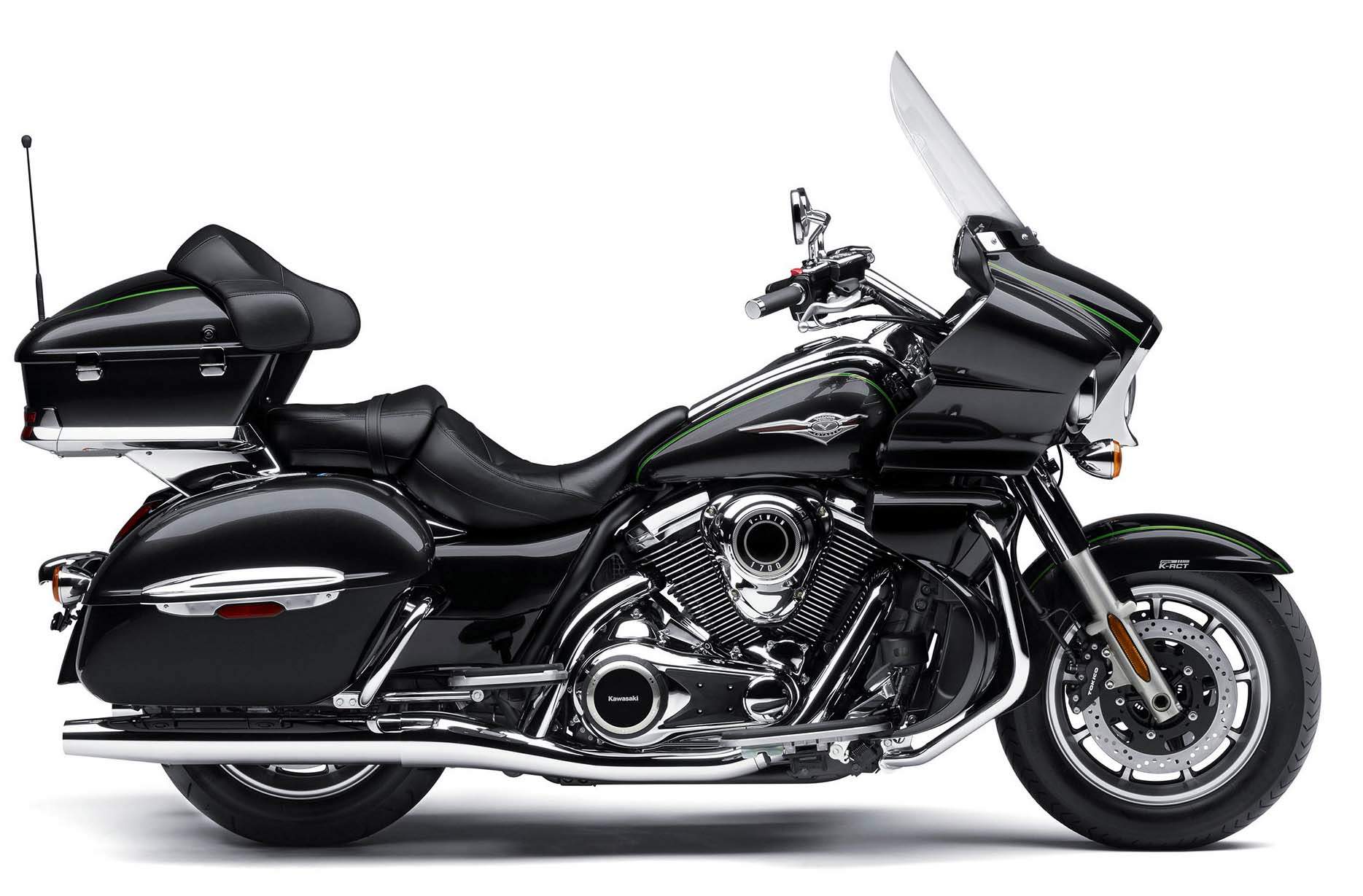
WIND PROTECTION A long-haul touring motorcycle needs superior wind and weather protection, and the Voyager packs plenty in the form of its large frame-mounted windshield and fairing, as well as leg shields that incorporate effective venting to help keep the rider's legs cool. Directly mounting this beautifully sculpted fairing to the frame transfers any wind buffeting to the bike rather than the handlebar, which reduces rider fatigue on longer trips. INTEGRATED LUGGAGE A full complement of stylish and integrated luggage is also part of the Voyager package. Sealed, lockable and top-opening side cases with 10 gallons (38L) of volume partner with a color-matched, 13.2-gallon (50L) lockable tail trunk that's big enough to swallow two large full-face helmets. Besides ample storage, the Voyager also has a pair of lockable glove boxes up front that provide a handy place for storing small items and accessories. SUSPENSION This full-dress touring cruiser handles like a much lighter machine thanks to optimal chassis design and excellent suspension. Dual air-assisted shocks offer 3.1" of adjustable rear suspension travel and feature settings unique to the Voyager. The shocks feature 4-way rebound damping adjustability to help ensure predictable handling and a comfortable ride. ERGONOMICS Comfortable seating for rider and passenger is a must on a touring bike. The Voyager delivers again with deluxe touring seats sculpted to provide support for all-day touring. Contributing to long-distance passenger security and relaxation are a luxury backrest and floorboards for both the rider and passenger. Built-in instruments and radio controls mounted on the Voyager's classic automotive-style dash offer exceptional functionality and classic muscle car styling. The image is reinforced by the classic typeface used on the large, round instrument dials, as well as a radio styled to with 1960s inspiration. A multi-function LCD display is mixed in with the retro analog dials in the center of the instrument console. It's controlled by switches on the right handlebar and features a gear-position indicator, clock, odometer, dual trip meters, remaining fuel range and average fuel consumption. The intercom headset-compatible, 40-watt, twin-speaker audio system features navigation audio prompts, a three-band (FM/AM/WX) radio that is also compatible with an iPod®, SiriusXM® radio tuner, select GPS devices or a CB radio unit. The audio system (and iPod) can be operated by an integrated controller on the left handlebar. In addition to volume, the rider can also adjust the bass, treble and balance levels of the system. Navigation audio prompt capability allows voice-prompting audio to be heard through the speakers, or Kawasaki Genuine Accessory helmet headsets, when using Garmin® Zumo® 600/665 GPS units. For an even more powerful sound, the Kawasaki Genuine Accessories rear speaker kit plugs right into the Voyager's factory sound system, adding twin speakers that are styled to match the tail trunk. A water-cooled, rare earth magnet alternator produces an impressive 46.8 amps of electrical output - enough to power add-on navigation systems and other electrical accessories that add to the modern touring experience. The Voyager also features a convenient cigarette lighter-style power port on the dash and two accessory power feeds under the seat - ideal for additional accessories.
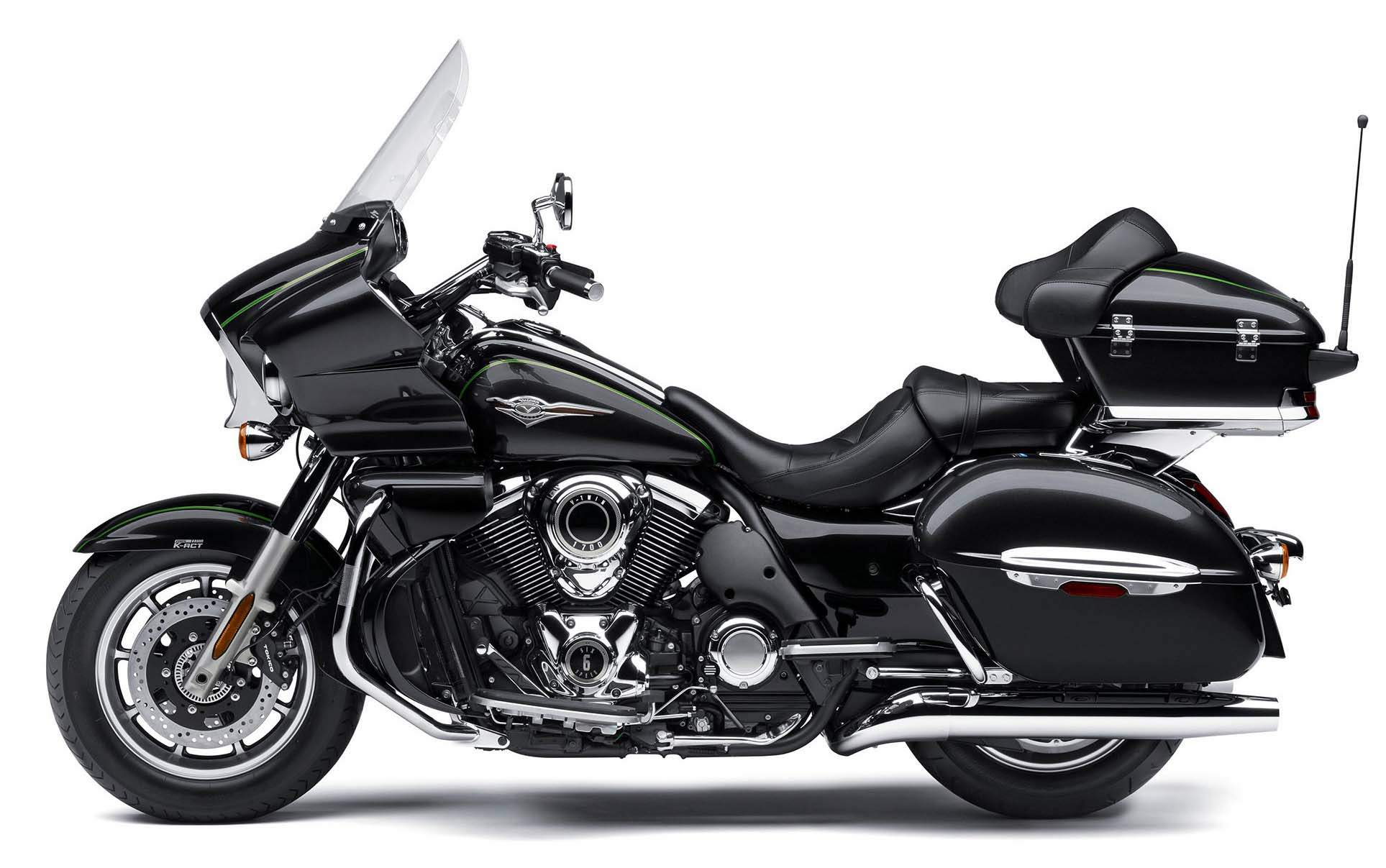

KAWASAKI VN1700 VOYAGER (2011 - on) Review

At a glance
Overall rating.
On the back of the American trend to cut down large custom touring bikes into ‘baggers’, Kawasaki has launched the Voyager Custom – a scaled down version of their full-dressed Voyager. Meaner, sleeker and £1500 cheaper than the big Voyager, the huge 1700cc engine remains, as does the side panniers but far less bling and chrome makes it more manly and gives the impression of a lighter more manageable bike. It’s a good looking, cheaper alternative to the American competition but let down by huge bulk and the need to change down for fast acceleration.
Ride quality & brakes
Despite not appearing as large as the full dressed Voyager, at 382kg the new Classic is far from light – that’s close to 60 stone in old money. Obviously trying to make 60 stone handle is not going to be easy and if you start to have fun with the motor it’s easy to find the handling limitations of the big girl: the foot boards will soon start to drag alarmingly. The brakes aren’t bad, far from it, and it’s not a nightmare, but similar bikes in this class out-handle the big Kawasaki.
At the heart of the Voyager sleeps a mighty, liquid-cooled 1700cc V-twin – despite at first appearing air-cooled. The huge 8 v motor throws out a respectable70bhp with a huge 100ftlb of torque. However, due to the massive weight and tall top gear, overdrive, you still need to cog down for quick overtakes. Fuel consumption at quick touring speed is also rather poor, less than 35mpg if pushed hard.
Reliability & build quality
The low-revving engine should be bullet proof and the shaft drive means maintenance should be minimal – reliability isn’t going to be an issue as it’s a proven engine. However there are a few niggling faults. There’s an annoying bit of plastic over the petrol tank which vibrates, and the clocks don’t fit flush in the large dash. This means at night, the dash lights light up not only the clocks but the rider too.
Value vs rivals
This is an area where the Kawasaki scores highly. It’s considerably cheaper than Harley-Davidson equivalent, the Street Glide, and even cheaper than the Victory Cross Country. In fact the Kawasaki appears to be somewhat of a bargain. With the money saved over the competition you could easily accessorise and personalise the bike adding character and still save money over the American competition.
Even though the Classic is a scaled-down version, it’s littered with goodies and extras. A twin 40w speaker stereo comes as standard, complete with an Ipod connection. On the right bar is a cruise control for those longer journeys. At the rear, there are side bags, an LED rear light and twin exhausts. There’s a small fly screen to add a little comfort and, for safety, ABS as standard.
Model history & versions
Model history.
Kawasaki VN1700 Voyager, Classic and Classic Tourer (launched 2009).
Other versions
Kawasaki VN1700 Voyager, Classic and Classic Tourer
Owners' reviews for the KAWASAKI VN1700 VOYAGER (2011 - on)
1 owner has reviewed their KAWASAKI VN1700 VOYAGER (2011 - on) and rated it in a number of areas. Read what they have to say and what they like and dislike about the bike below.
Review your KAWASAKI VN1700 VOYAGER (2011 - on)
Annual servicing cost: £400
The best features of the bike are, Style, Comfort, Brakes and MPG. I ride hard and still get 45 plus to the gallon. Worse features, Poor clutch slave cylinder position, Poor quality paint finish especially on speaker grills. Stereo very quiet.
I really like the ride on this, it handles very well. I replaced the stock pipes for Vance and Hines and removed the emission control system restrictions with a bypass. which resulted in better response more power and better MPG. It handles the corners very well for a bike this big, just got to watch the footboards !
Excellent V Twin Engine, great fuel economy on a recent pack run i returned 52 mpg, average is around 45-47
@8000 miles severe corrosion on speaker grills, mild corrosion on fork covers hydraulic connectors and casing bolts. signs of corrosion starting on welds around the chrome engine guards and passenger foot guards
I self service for the most part. Parts for the bike are not cheap, it would seem the days of Jap bike being a cheaper option to Harley are well and truly over!
Given the potential and the cost of the bike somethings should come as standard. The IPOD connector should be included as standard as should the power socket. These two items will cost you an additional £200 which is outrageous for what they are! the KQR sissy bar and rack will cost another £700 and can only be purchased in the states!! Kawasaki UK stock answer was to buy an aftermarket one instead! It would seem that Kawasaki are going dow the route of Harley Davidson !
Buying experience: I got the bike as a used bike from Somanybikes.com It was very, very cheap and well under book price. when looking around i could not find one cheaper than 11000 with 18k on the clock. I got mine for 7800 with 2700! so for that reason i got a bargain!

- Latest News
- Latest Reviews
- Brand New Bikes
- Accessories
- Base Layers
- Communication
- Learn To Ride A Motorbike
- Group Tests
- Used Bike Guides
- Bike Type Buying Guides
- Riding Tips
- Buying and Selling
- Inspiration
- Travelling and Touring
- London Motorcycle Show
- Motorcycle Live

Kawasaki Vulcan 1700 Voyager - 2011 Specifications and Reviews
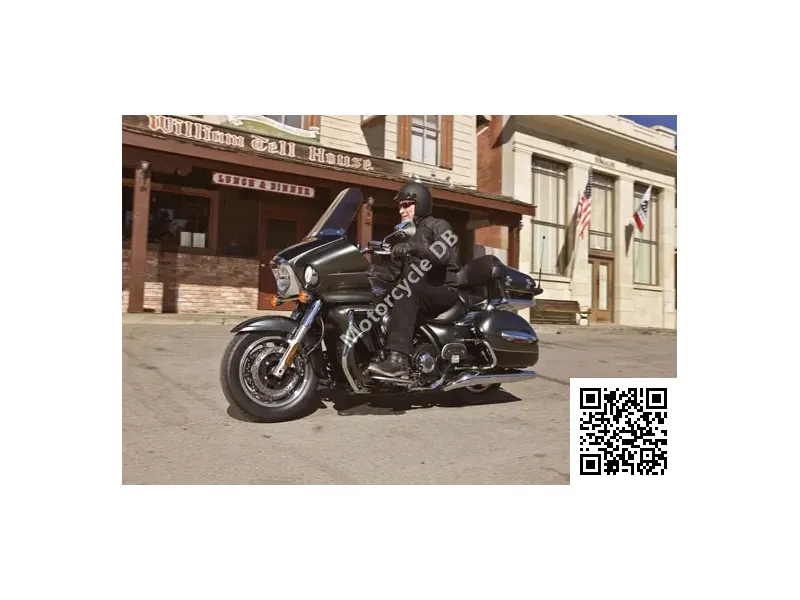
Rider Reviews
Add a comment, related motorcycle specifications.
2024 Husqvarna FE 501

2024 Oset MX-10

2024 Husqvarna TE 250 Heritage

2024 Triumph Street Scrambler Gold Line

2024 Triumph Street Twin Gold Line

2024 Triumph Tiger 900 Rally

2024 Piaggio MP3 300

2024 Suzuki V-Strom 1050XT Adventure

2024 Kawasaki KX112

2024 Vespa GTS 125

2014 Honda Wave 100R

2008 Hero Honda Splendor Plus

2013 Suzuki Raider J Pro 110

2013 Suzuki Shogun Pro 125

2010 Hero Honda CD Deluxe

2018 Yamaha Mio Sporty

2011 Modenas Dinamik

2010 Hero Honda Passion Pro

2007 Hero Honda Glamour

2009 Hero Honda Splendor Plus

Database Staus
- Motorcycles in database: 34383
- Technical specifications: 1152152
- Images of motorcycles: 57274
- Videos: 339
- Manufacturers: 475
2011 Kawasaki Vulcan 1700 Voyager ABS

Your changes have been saved
Email is sent
Email has already been sent
Please verify your email address.
You’ve reached your account maximum for followed topics.
10 Cheapest New Sports Bikes With Over 100 HP
10 great bikes that never made it to america, top 10 tips for motorcycle camping.
Kawasaki->ke299 is no stranger to top-shelf touring bikes that can hit long-distance rides as easy as they cross the block. That's why the new Vulcan 1700 Voyager ABS->ke1749 is such a stand-out bike for the Japanese motorcycle company. It's the classic tourer that is capable of whisking you and a passenger away in total comfort and classic style.
As the flagship of the Vulcan 1700 family, the 2011 Voyager boasts all the stuff you’ll need for such adventurous treks starting with a smooth and shockingly torquey 1,700cc V-twin powerplant and a large frame-mounted fairing. The Kawasaki throws in beautifully integrated luggage that stows a week’s worth of gear, a comfortable saddle, electronic cruise control, a high-fidelity sound system, and an optional K-ACT anti-lock/integrated braking system.
There's no question in anyone's mind the stature of Kawasaki in the industry. So when they release a full-fledged touring bike with all the bells and whistles, you know that you're definitely getting your money's worth.
Find out more about the Kawasaki Vulcan 1700 Voyager ABS after the jump. } }
- Make: Array
- Model: 2011 Kawasaki Vulcan 1700 Voyager ABS
- Engine/Motor: Four-stroke, liquid-cooled, SOHC, four valve per cylinder, 52° V-twin
- Transmission: Six-speed with overdrive
- [do not use] Vehicle Model: Array
As a long-haul tourer that needs superior wind and weather protection, the Voyager comes with a large frame-mounted windshield and fairing, as well as leg shields that incorporate effective venting to keep engine heat off the rider’s legs during slower going. To make the bike as fully integrated as possible, Kawasaki also added sealed, lockable, and top-opening side cases with 10 gallons of volume partnered with a color-matched, 13.2-gallon lockable tail trunk that’s big enough to swallow two large full-face helmets. The bike also boasts of a pair of lockable glove boxes up front, as well as comfortable seating for both the rider and the passenger. As far as the bike's instrument panel is concerned, the Vulcan 1700 Voyager has a multi-function LCD display that adeptly mixes in with the retro analog dials in the center of the instrument console with features that include a gear-position indicator, clock, odometer, dual trip meters, remaining range and average fuel consumption. There's also an intercom headset-compatible, 40-watt, twin-speaker audio system that features a three-band (FM/AM/WX) radio while also being compatible with iPods, an XM radio tuner, or a CB radio unit.
Performance
The Kawasaki Vulcan 1700 Voyager ABS carries a powerful 1,700cc 52-degree V-twin engine, one that comes with liquid cooling, four-valve cylinder heads and a single overhead cam setup for big-time mid-range power. The engine uses a pair of pistons to pump out all the torque you need over a wide rpm range. Likewise, the Voyager’s fuel injection and exhaust systems have all been tuned to deliver peak torque and horsepower at slightly higher rpm than the Classic models. The Voyager’s mufflers, meanwhile, have been redesigned to improve the bike's sound quality while improved shifting action, a revised intake manifold, and a slight EFI tweak improve throttle response by optimally matching up with the newly designed mufflers. Additional touring functionality is provided by the Voyager’s beefy but easy-to-squeeze clutch, one that carries six damping springs and progressive three-stage engagement for easier shifting under hard acceleration.
Featuring overdrive ratios and a super strong carbon fiber drive belt, the Voyager’s drivetrain is ideally suited to its role as a relaxed mile-eater. Its tall fifth and sixth gears contribute to relaxed riding and better fuel economy at highway speeds, and its carbon fiber drive belt has a 40-percent higher tensile strength than the latest Kevlar units, allowing use of a 28mm design that minimizes drivetrain width.
Chassis and Suspension
The Voyager handles like a much lighter machine thanks to an optimal chassis design and excellent suspension. Dual air-shocks offer 3.1 inches of rear suspension travel and feature settings unique to the bike while the shocks feature 4-way rebound damping adjustability that helps ensure predictable handling and a comfortable ride. Dual 300 mm front disc brakes come with dual twin-piston calipers while a single 300 mm rear disc brake with a twin-piston caliper is responsible for the bike's outstanding stopping power.
Specifications
- Motorcycles
- Kawasaki Vulcan
main content of page

SHOWSTOPPING STYLE AND PERFORMANCE
- VULCAN ® 1700 VOYAGER ®
- TOP FEATURES
- BUILD AND PRICE
- LOCATE A DEALER
The Vulcan ® 1700 Voyager ® is the king of Kawasaki touring cruisers. A 1,700cc digitally fuel-injected V-twin engine plus Kawasaki Advanced Coactive-braking Technology (K-ACT) ABS and electronic cruise control help make the Vulcan 1700 Voyager the pinnacle of power and luxury on the open road.
- Fuel-injected 52-degree 1,700 cc V-twin engine
- Electronic cruise control system
- Kawasaki Advanced Coactive-braking Technology (K-ACT) ABS
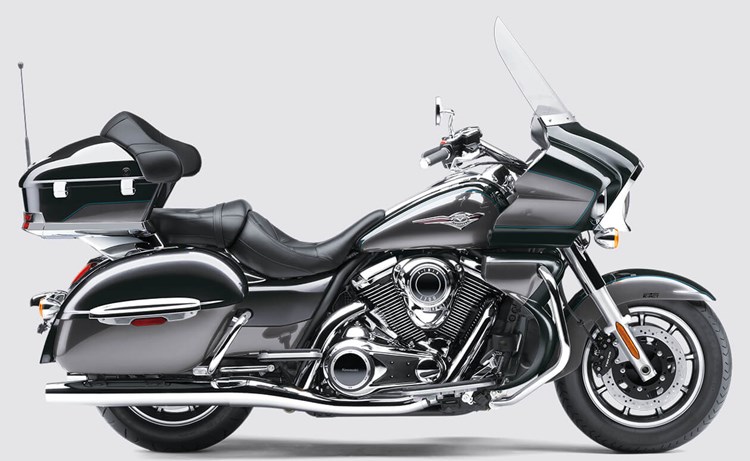
VULCAN ® 1700 VOYAGER ® ABS
MSRP $19,799
ADDITIONAL VEHICLE FEATURES:
- Dual-air-assisted shocks for optimized damping
- AM/FM/WB audio system with SiriusXM radio compatibility
- Intercom-headset compatible audio system
- Dual-locking saddlebags and tail trunk
- Large, easy-to-read instrumentation
- Stylish, frame-mounted fairing
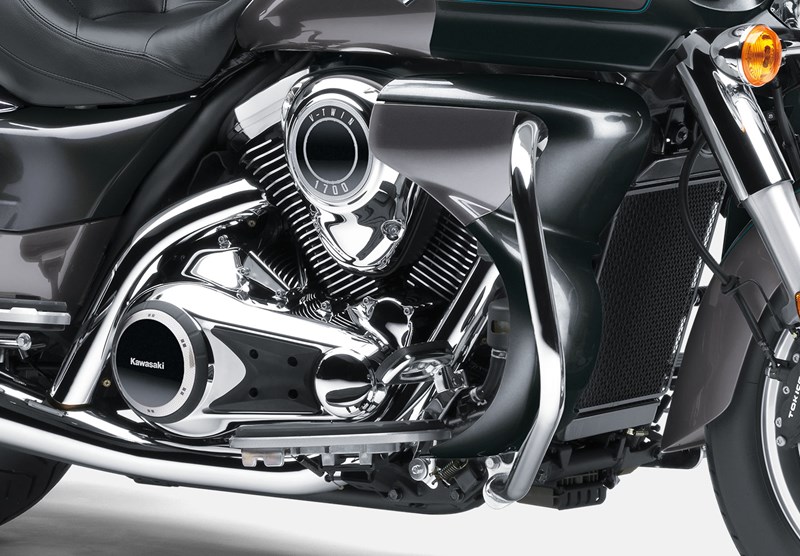
MASSIVE V-TWIN MUSCLE
A roaring fuel-injected 52-degree liquid-cooled 1,700cc V-twin engine powers the Vulcan® 1700 Voyager® ABS touring cruiser.
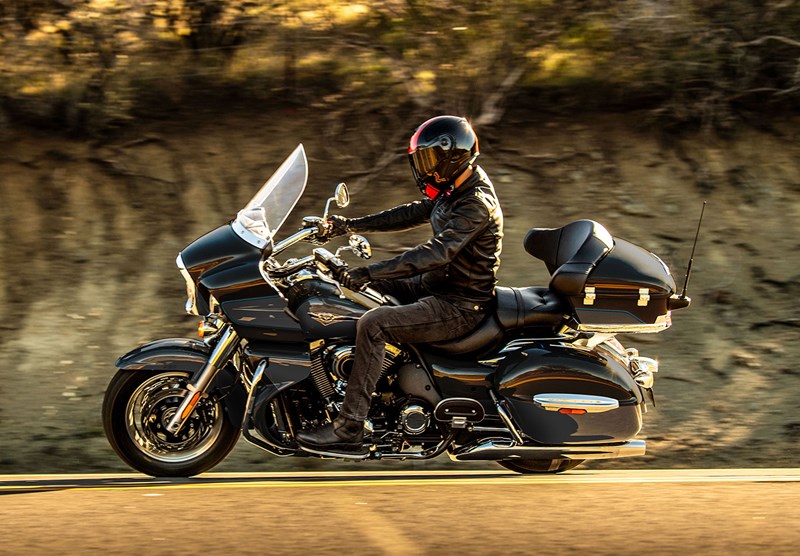
PERFORMANCE
Command the open road.
A frame-mounted fairing combined with Kawasaki Advanced Coactive-braking Technology (K-ACT) results in highly-effective braking and light steering with exceptional protection from the elements. These innovative performance features help deliver a smooth, reassuring ride.
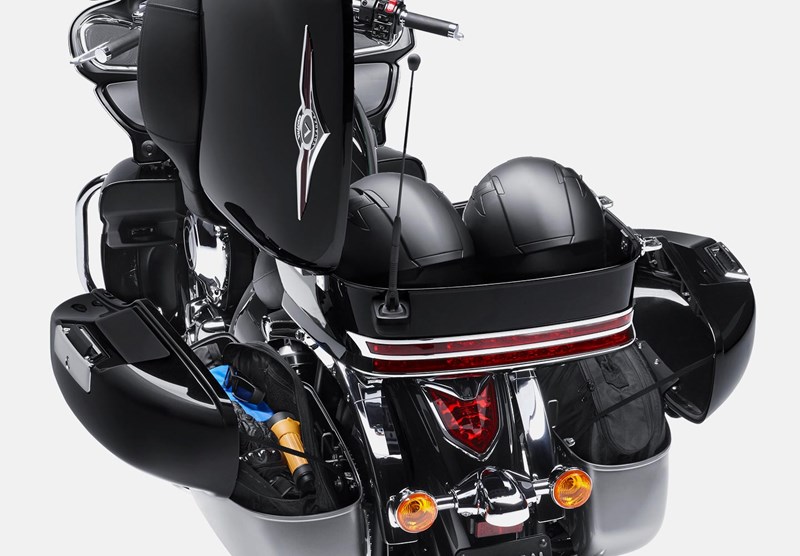
COMFORT & CONVENIENCE
Large trunk can hold two full-face helmets while high-capacity, locking saddlebags carry supplies and your long-distance gear. A comfortable saddle, passenger backrest and floorboards maximize passenger comfort on long rides. Small locking storage compartments allow you to stow electronics, sunglasses and other necessities in a convenient spot.
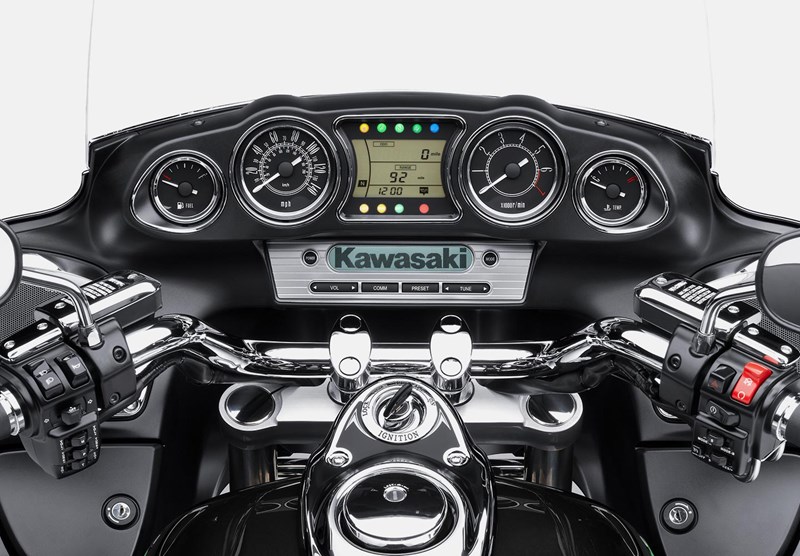
AUDIO & COMMUNICATIONS
Featuring a host of modern amenities and backed by a 36-month limited warranty, the Vulcan® 1700 Voyager® ABS motorcycle rides in a class of its own. Powerful speakers accompany the standard AM/FM/WB audio system with SiriusXM and intercom-headset compatibility. It also features Navigation Audio Prompt Capability in conjunction with select Garmin GPS devices (sold separately).
Enter your email address so that we can find your existing information.
If you are currently subscribed, check your email for a secure link.
We're Sorry. There has been an error.
- [ August 29, 2024 ] Top-tier talent wins MXGP in Frauenfeld Switzerland News
- [ August 29, 2024 ] First historic Ducati victory in the All Japan Road Race Championship News
- [ August 28, 2024 ] KTM Pol Espargaro and third 2024 MotoGP wildcard News
- [ August 28, 2024 ] MotoGP World Championship returns to MotorLand Aragón for 12th round of 2024 season News
- [ August 26, 2024 ] A Legend Returns… New 2025 Can-Am Motorcycles! 2025 Motorcycle Models
- [ August 26, 2024 ] Hot sunshine bathed MXGP of Switzerland News
- [ August 26, 2024 ] High-speed crash secures crucial MX2 victory in Switzerland News
- [ August 26, 2024 ] Red Bull KTM Factory Racing’s Manuel Lettenbichler wins 2024 Red Bull TKO News
- [ August 26, 2024 ] Pirelli allocation expanded for the unknown asphalt of Aragón Moto2 & Moto3 News
- [ August 26, 2024 ] Tennessee Knockout (TKO) festivities started with a bang News
- [ August 26, 2024 ] Final round of the 2024 U.S. Hard Enduro Series News
- [ August 26, 2024 ] Career-best Fourth Overall for MXGP Karlis Reisulis in Switzerland News
- [ August 25, 2024 ] RJ HAMPSHIRE PUTS ROCKSTAR ENERGY HUSQVARNA FACTORY RACING ON 250MX PODIUM AT IRONMAN News
- [ August 25, 2024 ] Spectacular first outdoor season and clean sweep at Ironman National MXGP News
- [ August 25, 2024 ] Impressive speed and form in heavy mud MXGP Frauenfeld Switzerland News
2011 Kawasaki Vulcan 1700 Voyager
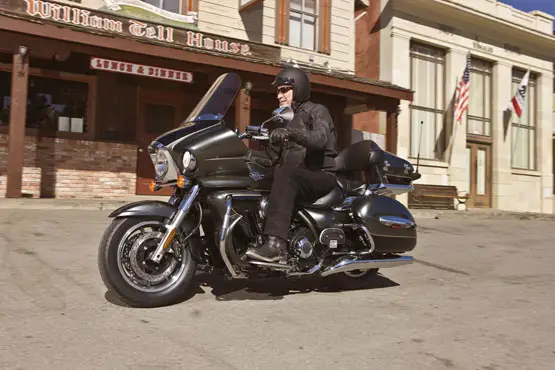
Back to 2011 Kawasaki Motorcycle Index Page
Click photos to enlarge. They make great desktop images.

– 2011 Kawasaki Vulcan 1700 Voyager
Classic Good Looks in a Big-rig Tourer That Does It All
Horizon-chasing touring bikes are nothing new to Kawasaki. The original Voyager® and the sport-touring Concours™ models have been pulling long-haul duty wonderfully for decades now. But not until 2009 did Team Green bless its V-twin cruiser with the full-dress accoutrements necessary to go across the state – or across the country – in wraparound, top-shelf comfort. The result was the Vulcan® 1700 Voyager, a tourer that could not only whisk you and a passenger away in total comfort, but in classic style, too.
As the flagship of the Vulcan 1700 family, the 2011 Voyager boasts all the stuff you’ll need for such adventurous treks: a smooth and shockingly torquey 1,700cc V-twin powerplant, large frame-mounted fairing, beautifully integrated luggage that stows a week’s worth of gear, a comfortable saddle, electronic cruise control, high-fidelity sound system, optional K-ACT anti-lock/integrated braking system and the sort of design acumen and dependability Kawasaki is renowned for. It’s a package without equal in the motorcycling world.
Though a non-ABS model is available, last year, Kawasaki upgraded the 1700 Voyager’s driveline/braking technology with the addition of its second-generation Kawasaki Advanced Coactive Braking Technology (K-ACT) system. Available on the ABS-equipped Voyager, K-ACT uses advanced electronics to translate the rider’s braking inputs from both the front lever and rear pedal into smooth, balanced deceleration and maximum stopping performance. Basically, the front lever also activates the rear brake, and the rear pedal also engages the right front caliper: K-ACT ensures all this happens seamlessly and efficiently, and the, second-generation system uses the same smaller, lighter ABS unit and faster, higher-spec brake ECU found on the Kawasaki Concours™ 14 ABS motorcycle for even smoother, more precise operation. K-ACT’s coactive function does not engage when braking is applied at speeds below 12 mph, and the ABS function is automatically disengaged at speeds below 4 mph.
There’s much more on the unique technology front, including Kawasaki’s fully electronic throttle valve system, which works in concert with the Voyager’s Electronic Fuel Injection (EFI) system to enhance engine response without dulling the big Vee’s distinctive throb. The system also helps the ECU deliver ultra-precise air/fuel metering and more accurate idle speed control. The setup utilizes an Accelerator Position Sensor (APS) and Throttle Position Sensor (TPS) that feed data to the ECU, which adjusts the throttle plates to tailor intake airflow accordingly. The system offers natural throttle feel, as APS is activated by a throttle-body pulley connected by cables to the throttle grip.
The 1,700cc 52-degree V-twin all of this cool technology was designed to support is a marvel of engineering, and is as functionally capable as they come. Featuring liquid cooling, four-valve cylinder heads and a single overhead cam setup for big-time mid-range power, the engine utilizes a pair of big pistons to pump out a massive quantity of torque over an unbelievably wide rpm range – a key to this engine’s superb flexibility. There’s a boatload of the stuff located throughout the rpm zone where riders will spend the most time—and more than enough from idle all the way to 5,000 rpm, so major-league, arm-straightening thrust is available right now every time you twist the grip. The Voyager’s fuel injection and exhaust systems are tuned to deliver peak torque and horsepower at slightly higher rpm than the Classic models, which is optimal for an open-road tourer. The Voyager’s mufflers have been redesigned for 2011 for improved sound quality and a more tapered, classic look. Other changes for 2011 are improved shifting action, revised intake manifold and a slight EFI tweak that improves throttle response by matching up more optimally with the newly designed mufflers. Additional touring functionality is provided by the Voyager’s beefy but easy-to-squeeze clutch, which features six damping springs and progressive three-stage engagement for easier shifting under hard acceleration. The Voyager’s innovative technology is matched with essential touring features such as electronic cruise control and a six-speed transmission with overdrive fifth and sixth gears. The cruise control is conveniently operated from the right handlebar and can be activated between 30 and 85 mph in any of the top four gears. Conveniently, the cruise control can be disengaged by pressing the brake lever, clutch lever, rear brake pedal, or by manually rolling off the throttle.
Featuring overdrive ratios and a super strong carbon fiber drive belt, the Voyager’s drivetrain is ideally suited to its role as a relaxed mile-eater. Its tall fifth and sixth gears contribute to relaxed riding and better fuel economy at highway speeds, and its carbon fiber drive belt has a 40-percent higher tensile strength than the latest Kevlar units, allowing use of a 28mm design that minimizes drivetrain width.
A long-haul tourer needs superior wind and weather protection, and the Voyager packs plenty in the form of its large frame-mounted windshield and fairing, as well as leg shields that incorporate effective venting to keep engine heat off the rider’s legs during slower going. Mounting this beautifully sculpted fairing to the frame transfers any wind buffeting to the bike rather than the handlebar, which reduces rider fatigue on longer trips.
A full complement of stylish and integrated luggage is also part of the Voyager package. Sealed, lockable and top-opening side cases with 10 gallons (38L) of volume partner with a color-matched, 13.2-gallon (50L) lockable tail trunk that’s big enough to swallow two large full-face helmets. Besides ample storage, the Voyager also has a pair of lockable glove boxes up front that provide a handy place for storing small items and accessories.
Comfortable seating for rider and passenger is a must on a touring bike. The Voyager delivers again with deluxe touring seats sculpted to provide additional support for all-day touring. Contributing to long-distance passenger security and relaxation are a luxury backrest and floorboards for both the rider and passenger.
Built-in instruments and radio controls mounted on the Voyager’s classic automotive-style dash offer exceptional functionality and classic muscle car styling. The image is reinforced by the classic font used on the large round dials of the instrumentation and a radio styled to resemble 8-track players from the 1960s.
A multi-function LCD display is mixed in with the retro analog dials in the center of the instrument console. It’s controlled by switches on the right handlebar and features a gear-position indicator, clock, odometer, dual trip meters, remaining range and average fuel consumption.
The intercom headset-compatible, 40-watt, twin-speaker audio system features a three-band (FM/AM/WX) radio that is also compatible with iPods, an XM radio tuner, or a CB radio unit. The audio system (and iPod) can be operated by an integrated controller on the left handlebar. In addition to volume, the rider can also adjust the bass, treble and balance levels of the system.
The Voyager also features a water-cooled, rare earth magnet alternator that produces an impressive 46.8 amps of electrical output – enough to power add-on navigation systems and other electrical accessories that add to the modern touring experience. The Voyager also features a convenient cigarette lighter-style power port on the dash and two power outlets under the seat – ideal for electrically heated clothing and additional accessories.
Kawasaki designers packed the Voyager with advanced technology without dulling its dramatic styling and attractive visual appeal. Like the dashboard, the Voyager’s bodywork continues the ’60s muscle car inspiration with its curved, muscular lines. The meticulous attention to detail and exquisite craftsmanship of the bodywork and engine covers is obvious in contoured shapes that look good from any angle and are as pleasing to the touch as they are to the eye. The Voyager handles like a much lighter machine thanks to optimal chassis design and excellent suspension. Dual air-shocks offer 3.1 inches of rear suspension travel and feature settings unique to the Voyager. The shocks feature 4-way rebound damping adjustability to help ensure predictable handling and a comfortable ride.
Offering a stylish alternative to other run-of-the-mill V-twin tourers, the Vulcan 1700 Voyager combines Kawasaki reliability with the performance, V-twin feel, comfort and amenities long-distance touring riders demand. Authentic Kawasaki Accessories are available through Kawasaki dealers.
2011 Kawasaki Vulcan 1700 Voyager motorcycle model Features
Details & Features
New For 2011
– Redesigned mufflers offer improved sound quality and feature a more tapered, classic look – Improved and quieter shifting action via revised 1st gear ratio and taller teeth on the third and fourth gears – Improved EFI settings that match the new muffler assemblies more accurately Key Features
– Powerful 1,700cc liquid-cooled V-twin delivers high levels of torque – Six-speed transmission for relaxed cruising – Electronic cruise control maintains speed for more comfort on long trips – Frame-mounted fairing provides stylish wind protection to the rider and passenger – Feature-rich audio system comes standard, has AM/FM/WB, and is compatible with iPods and XM radio – Color matched trunk is big enough to hold two full-face helmets – Lockable, color matched, top-opening hard saddlebags are capacious and easy to pack from the top – Low 28.7-inch seat height enhances the comfortable riding position – Compact and upright ergonomics for all-day rider comfort 2nd Generation Kawasaki Advanced Coactive-Braking Technology (K-ACT) ABS
– Voyager ABS models feature the latest, fastest version of Kawasaki’s sophisticated K-ACT system, which enables riders to execute controlled, balanced braking. Designed to complement the riders’ brake inputs, the system distributes the ideal amount of brake pressure to maximize braking efficiency – Low battery mode maintains ABS function while reducing signal frequency to conserve power when needed – For controllability in tight corners and when executing U-turns, K-ACT’s coactive function does not engage when braking is initiated at speeds below 12 mph – ABS function is disengaged at speeds below 4 mph – Both ABS and non-ABS models use dual 300mm front disc brakes with four-piston calipers and a two-piston rear disc brake for sure, powerful stops Powerful 1,700cc V-twin engine
– Liquid-cooled, four valves per cylinder, fuel-injected 1,700cc 52-degree V-twin engine – Long-stroke 102 x 104mm bore and stroke dimensions help deliver high levels of torque – approximately 15 percent greater than that of the Vulcan 1600, with a distinctive V-twin feel – Valve system is based on the Vulcan 2000’s, but uses a single overhead cam arrangement instead of pushrods for quicker revving and enhanced mid – to high-rpm power – Semi-dry sump allows a lower crankshaft placement and a longer piston stroke without increasing engine height – Single-pin crank accentuates the engine’s V-twin character by providing stronger power pulses – Large capacity airbox is located on both sides of the engine – Small-diameter iridium sparkplugs reach deep into the combustion chamber for high combustion efficiency, especially during low-load operation – Dual mufflers, one on each side of the bike, allow maximum clearance for luggage – Engine tuning offers superior acceleration in the 50 to 70 mph range – Even in overdrive, the engine pulls strongly in this speed range, facilitating overtaking at highway speeds Fuel Injection
– Based on the systems used by the Ninja® 650R and Vulcan 900 – Utilizes one sensor in place of the usual three for reduced complexity and weight – The touring-oriented Voyager utilizes FI and exhaust systems tuned to reach peak torque and horsepower at a higher rpm than the engines used in standard Vulcan 1700 cruisers Electronic Throttle Valve System
– Fully electronic throttle actuation system enables the ECU to control the volume of intake air (via throttle valve angle) and fuel (via fuel injector timing) delivered to the engine – Optimized fuel injector timing and throttle valve position results in accurate, powerful engine response – Control of both fuel injection and airflow provides easy starting and precise cold-engine idle speed control – From the rider’s perspective, the ETV works like a standard cable-operated throttle; the throttle grip is still connected to cables, so the feel at the grip is the same – Twisting the throttle turns a pulley on the throttle body which triggers the Accelerator Position Sensor (APS) to send a signal to the ECU, which then modulates the throttle valves via a DC motor – Accurate throttle position is relayed to the ECU by a Throttle Position Sensor (TPS) – APS and TPS send two sets of signals to the ECU for system redundancy in the unlikely event of a sensor failure Cruise Control
– Cruise control can be engaged and adjusted entirely from the right handlebar – Cruise control can be activated in 3rd gear or above at any speed between 30 mph and 85 mph – Pressure on the brake lever, clutch lever or rear brake pedal automatically disengages the cruise control, as will manually rolling off the throttle On Board Diagnostics
– Diagnostic system allows self-testing of the electronic systems on the Vulcan 1700 – Display codes on the instrumentation can be read by owner using accessory manual Six-speed Transmission / Final Drive
– Both 5th and 6th gears are “overdrive” ratios, which contributes to stress-free riding and better fuel economy when cruising at highway speeds – 28mm carbon fiber final drive belt offers a 40-percent increase in tensile strength compared to current Kevlar belts. This allows the Vulcan 1700 to use a slim belt only 2mm wider than the Kevlar unit on the Vulcan 900 – Belt drive system is quiet, efficient and offers reduced maintenance compared to a chain Light Handling Chassis
– A more compact package than its predecessors, the Voyager has a shorter wheelbase and shorter distance between the seat and steering head, for improved rider ergonomics and easier maneuverability – Designed to be as light and slim as possible, the frame minimizes the number of forged parts and trims any unnecessary metal. The only forged parts are areas that require additional strength – the down-tube joint, engine brackets, side-stand bracket, and rear fender/shock absorber bracket – The compact design contributes to light handling and facilitates handling at low speeds, especially when executing precise slow-speed maneuvers like parking or making U-turns 45mm Telescopic Fork
– Provides superb steering feedback – 5.5 inches of travel helps provide excellent ride quality Dual Adjustable Rear Air Shocks
– Features air-adjustable spring preload to help compensate for passenger and luggage variations – 4-way rebound damping adjustments help the shocks compensate for changes in spring pressure – Voyager-specific settings match the load carrying and long distance touring requirements inherent in this type of motorcycle 9-Spoke Cast Wheels
– Allow the use of tubeless tires and complement the Voyager’s muscular styling – 130/90 front and 170/70 rear tires offer optimal traction and wear characteristics – Tire choice and suspension settings augment the chassis’ light handling characteristics Classic V-twin Appeal
– Basic architecture has a significant impact on a V-twin engine’s appearance – The line created by the top of the airbox and the cylinder heads forms a curved shape that continues to flow through the bike – Deeply chromed engine covers have curved upper surfaces. Their three-dimensional form adds volume and gives a quality appearance – The edges of the cooling fins receive a special NC treatment that makes them gleam in sunlight – All the non-chromed parts of the engine have a matte black finish that further accentuates the chromed parts Bodywork
– Muscular fairing is reminiscent of classic American muscle cars in its sculpted, flowing design – Chromed headlamp cover and twin fog lights contribute to the muscle car theme – The fuel tank’s hand-sculpted contours employ constantly varying radii, giving the bike a dynamic flow that is pleasing both to the eye and to the touch – The lines flowing through the rest of the bike and its elegant fuel tank contribute to the Voyager’s curvaceous figure – Liberal use of chrome contrasts nicely with the bodywork’s deep, lustrous paint. The engine, front and rear guards, accents on the side cases and trunk, and the trunk brackets are fully chromed – Design motif from the front fender continues on the rear fender, which features an elegant LED taillight – Front and rear guards help protect the bike’s bodywork in case of a tip-over – Dual 35W fog lights have a dedicated On/Off switch and can be adjusted vertically – In addition to the taillight on the rear fender, the Voyager also has a large, highly visible LED taillight mounted on the rear of the trunk that contributes to its appearance Classic Retro Dashboard
– Instrument layout and large round dials give the Voyager’s console a classic automotive elegance, which is reinforced by the font used in the instrumentation – Even the radio has a classic look, reminiscent of the 1960s – Multi-function LCD display in the center of the instrument console is controlled by switches on the right handlebar. Features include a gear position indicator, fuel gauge, clock, odometer, dual trip meters, remaining range and average fuel consumption – Analog displays include speedometer, tachometer and coolant temperature gauge – Audio system with twin speakers features radio (FM/AM/WX) and compatibility with optional iPod®, XM tuner or CB radio units – The audio system (and iPod) can be operated by switches on the left handlebar – Ignition switch allows key removal in the on position; preventing keys from damaging the chrome finish around the ignition area during operation – Turning the ignition switch collar to the ACC position allows accessories to be used while the engine is off and turning it to the “OFF” position turns the engine off and necessitates re-insertion of the key to restart Wind Protection
– Large windshield and fairing help protect the rider and passenger from wind and elements – With the front fairing mounted to the frame, any wind buffeting is transferred to the bike rather than the handlebar, helping to enhance highway stability and reduce rider fatigue – Leg shields have adjustable vents to tailor the amount of airflow to the rider’s legs Ample Storage
– 13.2-gallon (50L) lockable trunk is large enough to fit two full-face helmets – Top-opening side cases are sealed and lockable, with a volume of 10 gallons (38L) each – Up front, lockable glove boxes provide a handy place for storing small items and accessories. An iPod jack (optional connector required) is located in the left-side glove box Comfort
– Sculpted seat designed for both long-distance ergonomics and an easy reach to the ground – Upright riding position and floorboards contribute to all-day touring comfort – Roomy passenger seat is complemented by padding on the trunk that provides back and arm support – Rear floorboards contribute to passenger comfort – Dual adjustable rear air shocks use settings optimized for load carrying and long-distance comfort Long Range
– 5.3-gallon fuel tank offers a substantial range, helping to minimize fuel stops when out on the open road
2011 Kawasaki Vulcan 1700 Voyager motorcycle model Technology
Newly designed engine offers both significant power and torque gains and superior passing performance. The 1700cc engine is mounted in a new frame designed for light weight and light handling. The Voyager’s compact package offers ease of manoeuvrability.
Powerful 1700cc V-Twin engine
Long-stroke, liquid cooled, SOHC, 8-valve 1,700 cc V-Twin engine was designed to deliver high levels of torque. Bore and stroke measure 102 x 104 mm. Torque is approximately 15% greater than that of the VN1600D.
Valve system uses a SOHC arrangement instead of OHV for more direct engine feel and easier merging onto freeways.
Large capacity airboxes are located on either side of the engine.
Twin mufflers (one on each side) are based on the same construction as those on the VN2000.
Semi-dry sump (like that on the VN2000) allowed the crankshaft to be lowered, enabling a longer stroke without increasing engine height.
Both pistons are connected to a single crankpin. Primary balance is satisfied care of two counter-balance shafts.
Small-diameter iridium spark plugs reach deep into the combustion chamber for high combustion efficiency, especially at low-load operation (near idling).
Belt final drive is quiet and efficient and helps reduce maintenance chores. Using carbon fibre instead of Kevlar as a tensile material, the belt offers high strength (tensile strength is increased by 40%) with a slim size and light weight. Belt width (28 mm) is more comparable to that of the VN900 models (26 mm) than that of the VN2000 (40 mm).
The clutch features six damping springs for 3-stage progressive damping that contributes to smoother feeling when getting back on the gas.
Superior passing performance
Engine tuning offers superior acceleration in the 80-113 km/h (50-70 mph) range. Even in overdrive, the engine pulls strongly in this speed range, facilitating overtaking at highway speeds.
Transmission
6-speed transmission with overdrive
6th gear is an overdrive gear, contributing to stress-free riding and better fuel economy when cruising at highway speeds.
Light handling
Designed from the start to be as light and slim as possible, the frame minimises the number of forged parts and trims any unnecessary meat. The only forged parts (the down-tube joint, engine brackets, side-stand bracket, and rear fender/shock absorber bracket) are areas that require additional strength. The new frame is lighter than that of the VN1600A, with greater torsional rigidity.
More compact in design, the VN1700 has a shorter wheelbase than both the VN2000 and VN1600. The compact design contributes to light handling.
Shorter distance between the seat and frame head pipe facilitates handling at low speeds, especially when executing U-turns.
Mounting the front cowling to the frame rather than the handlebars contributes to light handling when manoeuvring at low speeds.
Tire choice and suspension settings also contribute to the light handling.
Styling Kawasaki Cruisers have always been a showcase of craftsmanship and attention to detail. The Vulcan 1700 Voyager is no exception. With 60s-era American sports cars as a design theme, all surfaces have a muscular curvature that flows from one end of the bike to the other. Like on the VN2000 models and VN900 models before them, design of the engine covers and bodywork on the Vulcan 1700 models received meticulous care to ensure the bikes not only look good from any angle, but also that their elegant form is as pleasing to the touch as to the eye.
Basic engine structure has a great impact on a V-Twin engine’s appearance. Using a semi-dry sump enabled the engine’s long-stroke configuration without increasing its height.
The line created by the top of the airbox and the cylinder heads forms a curved lined that continues to flow through the bike.
Deeply chromed engine covers have curved upper surfaces. Their three-dimensional form adds volume and gives a quality appearance.
The edges of the fins receive a special NC treatment that makes them gleam in sunlight.
All the non-chromed parts of the engine have a matt black finish that further accentuates the chromed parts.
Slim design of the belt drive contributes to appearance.
Muscular front cowling is reminiscent of American sports cars in its sculpted, flowing design. Chromed headlamp cover and twin fog lights contribute to the look.
The elegantly shaped fuel tank tapers at the rear, contributing to the Vulcan 1700’s curvaceous figure, its lines flowing through the rest of the bike. The fuel tank’s curves have constantly varying radii, giving the bike a dynamism that is both powerful and sexy. Its hand-sculpted contours are pleasing both to the eye and to the touch.
Kawasaki craftsmanship is also evident in the styling motif of the front fender.
Liberal use of chrome contrasts nicely with the bodywork’s deep, lustrous paint. In addition to the engine, the front and rear guards are chromed, as are the accents on the panniers and trunk. Even the trunk brackets are fully chromed.
Motif from the front fender continues on the rear fender.
The Vulcan 1700 Voyager is the first Kawasaki V-Twin tourer to feature an elegant LED taillight.
In addition to the taillight on the rear fender, a large LED taillight mounted on the rear of the trunk is highly visible and contributes to the Vulcan 1700 Voyager’s appearance.
Instrument layout and large round dials give the Vulcan 1700 Voyager’s console a classic automotive appearance. This image is reinforced by the font used on the instrumentation. Even the radio has a classic look, reminiscent of 8-track p
Comfort and Convenience Cruise control
Operation of the cruise control is conveniently from the right handle.
Cruise control can be activated between 47 km/h (30 mph) and 137 km/h (85 mph) in 3rd gear or above.
Operating the brake lever, clutch lever or rear brake pedal causes the cruise control to be disengaged. Closing the throttle beyond the “zero-throttle” position is another instinctive way to disengage the cruise control.
Multi-function instrumentation and audio system
Multi-function LCD display in the centre of the instrument console is controlled by switches on the right handle. Features include a gear position indicator, clock, odometer, dual trip meters, remaining range and average fuel consumption.
Pushing the “S” switch to the left (“MODE-A”) toggles the middle display between “RANGE” (remaining cruising range) and “AVERAGE” (average fuel consumption). Pushing the “S” switch to the right (“MODE-B”) toggles the upper di
Audio system with twin speakers features radio (FM/AM/WX) and compatibility with an iPod, XM tuner or CB radio unit.
The audio system (and iPod) can be operated by switches on the left handlebar. Wind protection
Large windscreen and front cowling protect rider and passenger from wind and elements.
With the front cowling mounted to the frame, any wind buffeting is transferred to the bike rather than the handlebars, contributing to reduced rider fatigue on long trips.
Leg shields have air vents that allow airflow to the legs to be adjusted.
Ample storage
50 litre lockable trunk is large enough to fit two full-face helmets.
Top-opening panniers are also sealed and lockable, with a volume of 38 litres each.
Up front, lockable glove boxes provide a handy place for storing small items and accessories. An iPod jack (optional connector required) is located in the left-side glove box.
Sculpted seat designed for both comfort and easy reach to the ground.
Upright riding position and floorboard contribute to all-day touring comfort.
Roomy passenger seat is complemented by padding on the trunk that provides back and arm support.
Rear floorboards contribute to passenger comfort.
Dual adjustable rear air-shocks ensure a comfortable ride feel.
Additional features
Ignition switch allows on-position key removal, preventing key bunches from damaging the luxurious chrome finish around the ignition area while the bike is in operation. Turning the ignition switch collar to the “OFF” position turns the engine off and necessitates re-insertion of the key to restart. “ACC” position allows accessories to be used while the engine is off.
Dual 35 W fog lights have a dedicated On/Off switch and can be adjusted vertically.
ACG with rare earth magnets puts out an additional 155 W for powering accessories. 12 V socket located below the right-side glove box provides a power source for optional accessories.
Front and rear guards help protect the bike’s bodywork in the case of a stationary fall.
Electronic Throttle Valve ETV (Electronic Throttle Valve) System
Kawasaki’s first fully electronic throttle actuation system enables the ECU to control the volume of both the fuel (via fuel injectors) and the air (via throttle valves) delivered to the engine. Ideal fuel injection and throttle valve position results in smooth, natural engine response.
Control of both fuel injection and airflow enables precise cold-engine idling speed control.
The simple system makes it easy to incorporate other systems, like cruise control.
Twisting the throttle grip actuates a throttle pulley on the throttle body. The Accelerator Position Sensor (APS), also located on the throttle body, sends a signal to the ECU, which then actuates the throttle valves via a DC motor. Throttle position is confirmed to the ECU by Throttle Position Sensor (TPS).
Redundancy in the system (APS and TPS each send two sets of signals to the ECU) ensures some control is maintained in case of failure.
Because the throttle grip is connected to cables, the feel at the grip is like a standard cable-operated throttle
2011 Kawasaki Vulcan 1700 Voyager – USA Specifications MSRP: $17,499 USD
Engine: Four-stroke, liquid-cooled, SOHC, four valves per cylinder, 52-degree V-twin Displacement: 1,700cc / 103.7 cu. in. Bore x stroke: 102 x 104mm Compression ratio: 9.5:1 Maximum torque: 108 lb-ft @ 2,750 rpm Cooling: Liquid, plus cooling fins Induction: Digital fuel injection, dual 42mm throttle bodies Ignition: TCBI with Digital Advance Transmission: Six-speed with overdrive Final drive: Belt Frame: Steel, double-cradle with box-section single-tube backbone Rake / trail: 30 degrees / 7.0 in. Front suspension / wheel travel: 45mm hydraulic fork / 5.5 in. Rear suspension / wheel travel: Swingarm with twin air-assisted shocks, with 4-way rebound damping / 3.1 in. Front tire: 130/90×16 Rear tire: 170/70×16 Front brakes: Dual 300 mm discs, dual four-piston calipers, K-ACT II (ABS model) Rear brake: Single 300mm disc, twin-piston caliper, K-ACT II (ABS model) Overall length: 100.8 in. Overall width: 39.2 in. Overall height: 61.0 in. Ground clearance: 5.3 in. Seat height: 28.7 in. Wheelbase: 65.6 in. Curb weight standard / ABS: 886 / 895 lbs.** Fuel capacity: 5.3 gal. Colors: Candy Imperial Blue / Atomic Silver, Ebony / Pearl Meteor Gray Warranty: 36 Months
2011 Kawasaki Vulcan 1700 Voyager – Canada Specifications MSRP: $TBA CDN
Engine Type Liquid-cooled, 4-stroke V-Twin Displacement 1,700 cm3 Bore and Stroke 102 x 104 mm Compression ratio 9.5:1 Valve system SOHC, 8 valves Fuel system Fuel injection:?42 mm x 2 Ignition Digital Starting Electric Lubrication Forced lubrication, semi-dry sump Drivetrain Transmission 6-speed overdrive with positive neutral return Final drive Belt Primary reduction ratio 1.515 (50/33) Gear ratios: 1st 3.077 (40/13) 2nd 1.900 (38/20) 3rd 1.407 (38/27) 4th 1.143 (32/28) 5th 0.967 (29/30) 6th 0.806 (29/36) Final reduction ratio 2.250 (72/32) Clutch Wet multi-disc, manual Frame Type Double-cradle, steel Wheel travel: front 140 mm Wheel travel: rear 80 mm Tyre: front 130/90B16M/C 67H Tyre: rear 170/70B16M/C 75H Caster (rake) 30º Trail 177 mm Steering angle (left/right) 35º / 35º Suspension Front: type 45 mm telescopic fork Rear: type Swingarm with twin air-assisted shocks Rear: rebound damping 4-way Brakes Front: type Dual 300 mm discs Front: caliper Dual 4-piston Rear: type Single 300 mm disc Rear: caliper Twin-piston Dimensions Overall length 2,560 mm Overall width 995 mm Overall height 1,550 mm Wheelbase 1,665 mm Ground clearance 135 mm Seat height 730 mm Curb mass 402 kg Fuel capacity 20 litres Fuel Consumption 6.5 L/100 km (44 MPG) Performance Maximum power 61 kW {82 PS} / 5,000 rpm Maximum torque 146 N·m {14.9 kgƒ·m} / 2,750 rpm Details MSRP* TBA Colours Ebony / Pearl Meteor Gray Warranty 36 Months ( Including Sound System ) ADDITIONAL COST OPTIONS Good Times Protection Plan 12 or 24 months (Kawasaki GTPP coverage begins after the standard limited warranty expires)
* The Manufacturer’s Suggested Retail Price does not include freight, pre-delivery inspection or applicable taxes. The final price is at the discretion of the dealer. Prices and Specifications are subject to change without prior notice.
The specifications mentioned here apply to and have been achieved by production models under standard operating conditions. We intend only to give a fair description of the vehicle and its performance capabilities but these specifications may not apply to every machine supplied for sale. Kawasaki Heavy Industries, Ltd. reserves the right to alter specifications without prior notice. Equipment illustrated and specifications may vary to meet individual markets. Available colours may vary by market.
Be the first to comment
Leave a reply cancel reply.
You must be logged in to post a comment.
Copyright © 1999 - 2024 | Total Motorcycle ∙ 13 Billion Hits ∙ 25 Years ∙ 425 million Readers ∙ 1 Great Motorcycling Community!

- by Brand
- by Year
- by Category
- New 2024 models
- All 2023 models
- Newest additions
- 50cc motorcycles
- 125cc motorcycles
- 150cc motorcycles
- Electric motorcycles
- 1960s motorcycles
- 1950s motorcycles
- 1940s motorcycles
- 1930s motorcycles
- Contribute your specs / pics
- MC of the Year
- Advanced search
- Compare specs
- Compare ratings
- Unit converters
- Words & terms
- Riding safety
- Insurance quotes
- News & reviews
- General topics
- Motorcycle brands
- Motorcycle categories
- Best forum for your bike
- Latest discussion posts
- Free classifieds
- Account Settings
Classifieds
- Bike Reviews
Product Reviews
- Best Motorcycle Cameras
- Best Motorcycle Earplugs
- Best Motorcycle Oil
- Best Leather Jackets
- Best Winter Gloves
- Best Sportbike Tires
- GPS Buyers Guide
- Adventure Touring
- On-Off-Road
- Sport-Touring
- Touring Scooter
- Harley-Davidson
- Royal Enfield
New Rider's Hub
Top stories.

2011 Kawasaki Vulcan 1700 Vaquero Review - Motorcycle.com
The company discovered that riders looking to move up from smaller cruisers to a larger model aren’t necessarily interested in or ready for full touring boats, like the Vulcan Voyager, Harley-Davidson ’s Electra Glide models or H-D’s Road Glide Ultra.
Of course, the Vaquero is also crafted as a bike with an appeal all its own, drawing in riders that don’t always have a cruiser background – like ZX-14 owners. Long says these riders are part of the Vaquero’s demographic, as they look either to switch two-wheeled genres or further expand the type of mounts they ride.
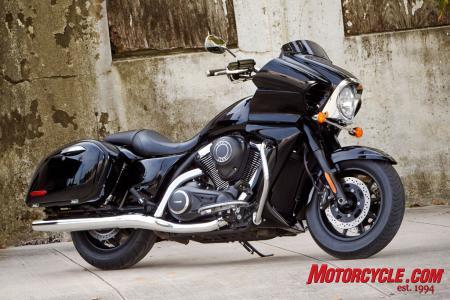
And, naturally, with this latest Vulcan, Kawasaki hopes to woo riders from other cruiser brands as well.
During the Vaquero’s recent press launch in Montgomery, Texas, an hour or so north of Houston, Kawasaki staff didn’t specifically say the intent was to get in on the growing bagger sub-segment with the Vaquero, but more often referred to it as the next-step bike mentioned above.
Regardless of how much candor Team Green was willing or able to speak with on this matter of entering the realm of Harley’s Road Glide Custom and Street Glide models, Victory ’s Cross Country and Star ’s Stratoliner Deluxe, the fact is, with the Vaquero, Kawasaki has beat Honda and Suzuki to the lucrative bagger market.

To give you a sense of how important this part of the cruiser world is, Harley-Davidson says (without revealing any sales figures) the Street Glide is its top-selling model. Perhaps Honda and Suzuki don’t currently have any designs on the bagger game, but it would seem a wise move to join the party.
Another steel horse in the Vulcan stable
At its core the Vaquero is a Vulcan 1700. The latest V bike in Kawi’s big cruiser lineup shares its 1700cc (103.7 c.i.) liquid-cooled, SOHC, four-valve-per-cylinder, 52-degree V-Twin engine carried in a steel-tube cradle-type frame basic platform with its Vulcan Classic, Vulcan Nomad and Vulcan Voyager/ABS stablemates.
Changes to the 1700cc Twin unique to the Vaquero for 2011 include a new second piston ring for “improved durability,” and in the interest of weight reduction the lower primary chain guide was eliminated. Also specific to the Vaquero is a new first-gear ratio said to reduce shifting noise when clicking from neutral to first. Revised cogs for third and fourth gear also work to smooth out shifting action while reducing clatter from the gearbox.

Kawasaki noted that most Vulcan fans are satisfied with how the engine sounds and performs, but some riders with a touring bent requested a reduction of the noises generated when shifting gears. Finicky lot.
The Vaquero employs the same type of damper-less clutch found in the Vulcan Classic, which Kawasaki says gives the rider an increased feel for the engine, or a “higher torque feel.”
However, a cush drive damper remains in the rear hub. Absence of a clutch damper ostensibly gives the Vaquero “more character.” The Voyager and Nomad retain the clutch damper in order to help reduce some of the sensation of the engine’s power pulses.
According to Long, perceiving the increased engine feel in the Vaquero is likely to depend on the rider and/or the type of riding.
He gave an example of when he and another Kawi employee, both “bigger guys,” immediately noticed the difference between two sample bikes – one with and one without a clutch damper – while riding two-up. Another pair of lighter-weight riders had greater difficulty discerning which bike used the damper-less clutch.

The unstated premise here is that a touring rig, one carrying a passenger and full up with gear, should better nullify engine shakes, rattles and rolls so as to allow the touring rider a more enjoyable tour, if you will. Kawasaki dubs the Vaquero as the “ultimate solo cruiser with unmatched style, power and comfort.” We might infer from this that a Vaquero customer is perhaps more interested in the bike’s performance quotient and might value the engine’s visceral appeal more than he or she would the highest level possible for comfort.
Is removing a degree of smoothness by design a smart marketing move or something more on the gimmicky side?
Hard to say; but then again, if ultimate comfort was a key motivator of V-Twin sales, every V-Twin engine on the market would likely then employ rubber mounting and all manner of engine counter balancing. Yet plenty of cruiser makers do just the opposite, so there seems some merit in Kawi’s effort to give the rider more feel from the Vaquero’s engine.
On the other hand, the aforementioned tranny revisions aimed at reducing noise and increasing smooth shifting seem in contrast to the intent behind taking out the clutch damper. If Kawi presumes a Vaquero rider may want to feel more in touch with the engine, would that same rider then mind a little clank or clunk from the gearbox?

For what it’s worth, I scale in at an out-of-shape 155 lbs and can’t say I really felt the Vaquero engine’s more rugged nature – just as Long indicated some riders might not.
To the contrary, after a150-plus mile loop the Vaquero’s powerplant struck me as considerably smoother than many of its competitors. Maybe only Harley’s rubber-mounted Twin Cam 96 is slightly smoother, but only when under power. At idle the H-D Twin shudders like a paint shaker. The Kawi Twin is smooth at just about every point, including idle, save for some low-resonating vibes around 70 mph when in the rather tall and overdriven 6th gear (5th is also overdriven).
There is, however, enough vibe and rumble from the Vaquero’s dual-counterbalanced engine to satisfy my tastes. One of the aspects I enjoy most about motorcycling is the mechanical-ness of two wheelers and the sounds and feel associated with them – on that level the Vaquero works just fine.
As exhaust works it way out of the Vulcan engine it passes through the Vaquero’s tapered muffler tips said to reduce exhaust decibel levels (Kawi wasn’t willing to state precise decibel figures) at cruising speeds while also mirroring the rest of the bike’s long, flowing look. Last year’s Voyager and Nomad sported slash cut exhaust tips but for 2011 they also get the tapered treatment.

A new casting mold for the intake manifold is said to increase flow volume for more linear throttle response and improved idle; this update is given to all 1700cc Vulcans. The combination of changes to the intake manifold and exhaust necessitated changes to the ECU, and so all Vulcan 1700s have an updated brain for 2011.
Lastly, the Vaquero’s final drive belt is 2mm narrower, from 28mm to 26mm, for better tracking between the belt’s pulleys and for reduced belt squeal and squeaks.
Ergos on the new Vaquero split the difference between a couple of its Vulcan brothers, for what Kawasaki says is an “expanded rider triangle.” The Vaquero’s floorboards are set in the same position as the Nomad’s, that is, more forward than the other Vulcans, and its all-new, tapered one-piece seat has a lumbar shape – or hump – similar to the Classic’s saddle.
The Vaquero seat is also ready to accept an accessory rider backrest and quick-release passenger backrest, while a separate accessory seat accommodates passengers better than the standard saddle.
The Vulcan Classic still offers the lowest seat height of all 1700 Vulcans at 28.3 inches, while the Vaquero, Nomad and Voyager all have 28.7-inch seat heights. Victory’s Cross Country and Cross Roads boast an even lower 26.25-inch seat height. The Harley Road Glide Custom, a direct competitor to the Vaquero, has a seat height 1.6 inches lower than the touring Vulcans, but it and the Street Glide also have pitifully less rear suspension travel.

Where the Vaquero offers 3.1 inches of rear travel from its dual shocks with air-adjustable preload and four-way rebound damping (same for all Vulcan 1700s), the Harley’s air-adjustable shocks move a mere 2.0 inches. The Vaquero’s combo of thick seat foam and ample rear suspension travel make for a downright plush ride compared to the often-jolting experience a rider gets from the back half of either Harley ‘Glides.
Accessing the Vaquero’s dual air valves for the shocks is as simple as removing the seat; total pressure range for rear suspension is 0-40 psi. Recommend setting for a 150-lbs rider with empty luggage is 0.0 psi.
For the moto media’s test ride, Kawi techs set the shocks to 15 psi; the setting proved ideal for my 150-ish lbs frame. A Kawi staffer who weighs considerably more (I’ll spare him a guess at his “healthy” weight) said he often rides the Vaquero with the preload set only 5-psi higher.
Victory’s bar-mounted fairing bagger, the Cross Country, has even more rear suspension travel with 4.7 inches, as does the Star Stratoliner Deluxe with 4.3 inches. Reflecting on our recent Bagger Shootout that included the Vic and Star, I can say that despite more rear suspension travel than what the Vaquero has, neither of those bikes provides a significantly more forgiving ride than the Vaquero
The Voyager’s 45mm fork is given to the new Vaquero, while the Vulcan Nomad and Classic have a 43mm unit. Front suspension travel for the Voyager and Vaquero is 5.5 inches – 0.4 inches more than in the 43mm inverted fork on both the Cross Country and Cross Roads.

The Vaquero’s rather plump-looking 130/90 x 16 Bridgestone Exedra radial front tire appears like it might make for slow steering response; however, the front bun is a good pairing to the 170/70 x 16 rear tire. Neutral handling is a key characteristic of the Vaquero; steering effort is light, with a fluid, linear movement from upright to full lean.
This Vulcan’s claimed curb weight is 836-lbs. That’s 25 lbs more than the Road Glide Custom’s running order weight, and a whopping 41 lbs more than what Star says Strato Deluxe weighs fueled and ready to ride.
The Vaquero’s lean angle clearance isn’t as generous as that of the Victory Cross bikes – few cruisers in this class offer as much as the Vics – but is at worst, average. Standard calipers gripping 300mm discs handle braking, and at this time ABS is only available on the Euro version of the Vaquero. Only the heavier Vulcan Voyager offers optional ABS. Excluding ABS from the Vaquero seems inline with what the rest of the market is doing with baggers that aren’t intended as long-haul tourers.
Styling is elemental to cruiser/bagger design, and the Vaquero’s smooth, flowing lines, from the frame-mounted fairing with color matched inner fairing to the sculpted hardbags weaved into the shape of the tail section, the Vaquero’s look says that form is just as important as function for this Kawasaki.

All is not perfect, unfortunately, as the faux tank strap doesn’t fully disguise its plastic reality; and in a sacrifice to style the Vaquero’s 9.6-gallons-each side loading saddlebags lost about half a gallon of space compared to the Voyager and Nomad’s top-loading bags. The Vaquero’s bags operate with a reassuringly solid-functioning chrome handle/latch.
It’s prudent that the Vaquero’s bags require a key (same as ignition) to open and close so as to prevent your stuff readily dumping out. But the bags’ fixed mounting method, rather than a tool-less and easily removed Dzus fitting like the Harley and Victory use, makes accessing each of the Vulcan shock’s rebound damping adjuster atop the shock body unnecessarily frustrating. You’ll need patience or smallish hands, or both, to reach behind the saddlebags in order tweak the shocks.
Contrary to this lil’ shock access peccadillo is Kawasaki’s thoughtfulness in placing two helmet hooks under the saddle.
The large fairing and almost-not-there, style-conscious 6.0-inch windscreen sufficiently protected my 5-foot 8-inch frame from the wind without excessive buffeting, but taller riders may have a different, less favorable experience. A simple remedy for unwanted windblast is to choose from one of five optional screens ranging from 6.5 inches to 18.0 inches in height.

The standard screen and optional 6.5-inch unit are both dark tint; the remaining taller accessory screens are only available in clear.
Speaking of options for the Vaquero, about the only one not on offer is ABS. The Vaquero is otherwise just about as loaded as any bagger comes, with a robust sound system providing AM/FM/WX, and is XM ready – all that’s necessary is the accessory XM module – while the AUX mode on the sound system allows use of an MP3 player via an accessory adapter.
The sound system’s volume/mode and track/station selector switches on the left-side switch gear are joined by a built-in CB function switch that waits patiently for the addition of an optional CB system. Switches for the standard cruise control (also on Voyager and Nomad) are located on the right-hand switch housing. Cruise activates when in 3rd gear or any speeds between 30 and 85 mph.
A rider can increase or decrease cruise speed by as little as 1 mph at a time thanks to the EVT (Electronic Throttle Valve – type of throttle-by-wire) used on the Vaquero as well as on the Nomad and Voyager.
On the subject of adapters and music, the Vaquero’s left-side locking glove compartment is prewired to plug into Kawasaki’s accessory iPod adapter kit that comes with a foam-rubber holder for your iPod. The adapter is pre-molded in the shape of the compartment for a secure fit.

Thirty-five accessories are available now with many more in the chute; and when it came time to plan for Vaquero accessories, Kawasaki took a calculated approach to making the bike as plug-n-play as possible.
The bike’s wiring harness has many accessory plugs prewired (like the aforementioned iPod connector plug), and the ability to purchase accessories a la carte allows a consumer a modular path to building exactly the Vaquero they want without committing to extras they aren’t necessarily interested in.
Ride ‘im, cowboy!
Prior to the Vaquero’s launch, the Victory Cross Country arguably provided a whole lot of bang for the buck.
The Vic offers the roomiest saddlebags in the class, a comprehensive sound system, second-largest V-Twin in the class, a stout aluminum frame joined by excellent overall ride quality and comfort, all for $17,999.

Although the 2011 Kawasaki Vulcan 1700 Vaquero’s 1700cc engine isn’t quite as big as the Victory’s 1731cc lump, when we lasted dyno tested a Vulcan 1700cc in the Vulcan Classic vs. Triumph Thunderbird comparo, the Vulcan managed 86.3 peak ft-lbs. In our 2011 Bagger Shootout the Victory Cross Country churned out just less than 89 ft-lbs.
We’d expect a little better performance from the Vulcan’s liquid-cooled engine, but then again we’re only talking a deficit of a couple ft-lbs.
Furthermore, the Vulcan’s chassis performance and ride comfort are right there with the Victory. And the Vaquero provides a level of rider entertainment comparable to the Cross Country, including multi-menu access for MP3 players. Standard cruise also matches the Victory.
One of the few areas the Kawasaki comes up short to the Cross Country is hardbag volume. But the Vaquero’s impressive standard three-year warranty with optional warranty add-ons extending base coverage an additional one to three years is a rare offering in the moto world. And the warranty remains in tact if you use Kawasaki accessories.
Star’s Stratoliner Deluxe has the most powerful V-Twin in the segment, but beyond the extra power, and an iPod connector in its batwing fairing, it’s hard to justify the Star’s $17,499 price in the face of the competition.
No question the Vaquero is influenced by the venerable Road Glide Custom from Harley. The bike from Milwaukee is a quality machine and it has an excellent dash, but for now H-D doesn’t offer a plug and play setup for the iPod – something I see as a new standard.

Then of course there’s the issue of the Harley RG Custom’s smaller 96 c.i. Twin (good for 80.4 ft-lbs the last time we dyno’d), not-so-great rear suspension, the extra $295 required for cruise control and a class-topping base MSRP of $18,999. In fairness, what Harley does boast over most other brands is typically good resale value.
With the recent addition of Victory’s Cross models, the bagger battle has almost overnight become a war in which a manufacturer must offer the most motorcycle for the least cost – not just the best bike at any cost. Victory sets the bar high in this new paradigm.
But now comes the $16,499 Vulcan Vaquero to meet most of Victory’s standard; a good ol’ fashioned duel ensues. Perhaps the new guy in town might even beat Victory at its own game.
Related Reading 2011 Kawasaki Vaquero Preview 2010 Kawasaki Vulcan 1700 Voyager Review 2011 Bagger Shootout 2010 Harley-Davidson Road Glide vs. Victory Cross Country 2010 Kawasaki Vulcan 1700 Classic vs. Triumph Thunderbird 2011 Victory Lineup Reviews All Things Kawasaki on Motorcycle.com All Things Cruiser on Motorcycle.com All Things Touring on Motorcycle.com
More by Pete Brissette
Join the conversation

Find your Motorcycle
Specs classifieds, popular articles.

2025 Can-Am Origin and Pulse Electric Motorcycles – First Look

Weekend in Muskoka - Motorcycle Touring in Ontario’s Cottage Country

2025 Can-Am Canyon – First Look

Harley's DEI Climbdown Isn't the Woke-ism Defeat You Think it Is

Top 6 - Best 300cc Motorcycles
You may also be interested in.
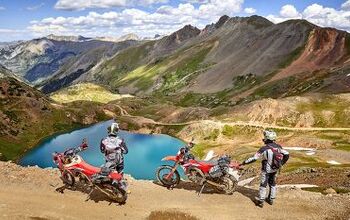
Adventure Riding in the American West – A Photobook
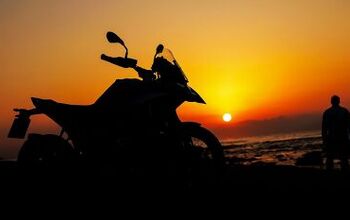
2025 BMW R 1300 GS Adventure Confirmed in Homologation Filings
Triumph Pulls off 1-2 Finish at Inaugural AFT Adventuretrackers Race

World Supersport 300 Championship to End After 2025 Season

BMW R20 Concept Gallery

The 390 Adventure Project – Upgrades and Adjustments

Discover Mosko's New Range of Gear Featuring RHEON Labs CE Armor

The 390 Adventure Project - Austin Moto Adventures

Interview with Norton CEO Robert Hentschel

2025 Royal Enfield Guerrilla 450 Review – First Ride
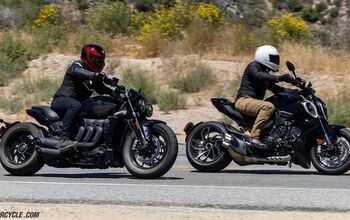
2024 Ducati Diavel V4 vs Triumph Rocket 3 Storm R – Side by Side

What Motorcycle Are You Surprised is Still In Production? – QotD

Mitas Expands SPORT FORCE+ RS Tire Lineup

Ducati Unveils New Scrambler Concepts

How To Protect Motorcycle Chrome
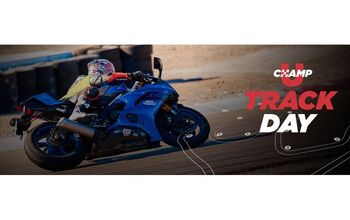
YCRS Introduces Champ U Trackday - A Complete Trackday Guide

Cardo Releases PACKTALK PRO

Pierer Mobility Gains Majority Control of MV Agusta

IMAGES
VIDEO
COMMENTS
After many years and several thousands of miles on the same bike (i have 1999 VN1500 classic and 1980 Yamaha XS1100) i have decided to get a new bike. In september 2011 i have purchased 2011 Vulcan 1700 Voyager with ABS. Until december i was able to put about 1800 miles on it.
Kawasaki Vulcan 1700 Voyager Touring Kawasaki 2011 V2, four-stroke 146.45 Nm ... Kawasaki Vulcan 1700 Voyager Specs (2011) Add bike to comparator. Key Specs. V2, four-stroke. 103.7 cu-in 1700 cm 3. 6-speed. 884 lbs / 401.9 kg. Kawasaki Vulcan 1700 Voyager General Information: Brand: Kawasaki :
3.3 See the detailed rating of touring capabilities, reliability, accident risk, etc. Compare with any other motorbike. Engine and transmission. Engine size. 1700.0 ccm (103.73 cubic inches) Type of engine. V2, four-stroke. Engine details. 52° V-twin. Torque.
MSRP. $18,599. Type. Touring. Insurance. Rating. #3 of 4 Kawasaki Touring Motorcycles. Compare with the 2024 Kawasaki KLR® 650 Adventure ABS.
Specifications. Make: Array Model: 2011 Kawasaki Vulcan 1700 Voyager Engine/Motor: Four-stroke, liquid-cooled, SOHC, four valve per cylinder, 52° V-twin Transmission: Six-speed with overdrive [do ...
As for power, the 2011 Kawasaki Vulcan 1700 Voyager had its soul brought to life by a 1,700cc four-stroke V-twin liquid-cooled engine that delivered an output power of 73 hp at 5,000 rpm and 136 ...
2011 Kawasaki Vulcan 1700 Voyager Specifications, Model Information, and Photos Motorcycles For Sale; Sell My Motorcycle; Auctions; Resources; Find Dealers; These have been temporarily saved. ... 2011 Kawasaki Vulcan 1700 Voyager Specifications Spec, Photos, and Model Information / / Start Price. $17,499. Displacement (cc) 1700. Torque (Ft Lbs ...
The Vulcan 1700 Voyager weighs -50102- lbs. and has 5.3 inches of ground clearance. The Vulcan 1700 Voyager was introduced in 2009 and is Carryover for 2011. It includes a 36 month Limited warranty. MSRP: $17,499 Est. Monthly Payment*: $292. CURRENT OFFERS.
Offering a metric alternative to V-Twin tourers, the Vulcan 1700 Voyager combines Kawasaki reliability with the performance, comfort and amenities that long-distance touring riders demand. While any motorcycle can be ridden long distances if the rider is determined, only a special few truly deserve to be called a touring cruiser.
Next up: Reliability. 4 out of 5 (4/5) At the heart of the Voyager sleeps a mighty, liquid-cooled 1700cc V-twin - despite at first appearing air-cooled. The huge 8 v motor throws out a ...
Everything you need to know about the 2011 Kawasaki Vulcan 1700 Voyager Including Pictures, specifications, videos and reviews - Wheelbase 1,666 mm (65.6 inches) 31 October. Tuesday 2023 ... Engine and Transmission Specifications: Transmission type,final drive: Belt: Gearbox: 6-speed: Cooling system: Liquid: Ignition: TCBI with Digital Advance ...
Performance. The Kawasaki Vulcan 1700 Voyager ABS carries a powerful 1,700cc 52-degree V-twin engine, one that comes with liquid cooling, four-valve cylinder heads and a single overhead cam setup ...
3.9 See the detailed rating of touring capabilities, reliability, accident risk, etc. Compare with any other motorbike. Engine and transmission. Displacement. 1700.0 ccm (103.73 cubic inches) Engine type. V2, four-stroke. Torque. 146.5 Nm (14.9 kgf-m or 108.0 ft.lbs) @ 2750 RPM. Compression.
Kawasaki VN 1700 Voyager Touring Kawasaki 2011 V2, four-stroke 72.42 HP ... - Kawasaki VN1700 Classic Tourer (2010) - Kawasaki Vulcan 1700 Voyager (2009) - Kawasaki VN 1700 Voyager (2009) - Harley-Davidson Road King Fire ... Kawasaki VN 1700 Voyager Specs (2011) Add bike to comparator. Key Specs. V2, four-stroke.
Kawasaki Vulcan 1700 Voyager ABS Specs (2011) Add bike to comparator. Key Specs. V2, four-stroke. 103.7 cu-in 1700 cm 3. 6-speed. 895 lbs / 406.1 kg. Kawasaki Vulcan 1700 Voyager ABS General Information: Brand: Kawasaki : Model: Kawasaki Vulcan 1700 Voyager ABS : Start year: 2011 : Year: 2011 : Category: Touring :
The Vulcan ® 1700 Voyager ® is the king of Kawasaki touring cruisers. A 1,700cc digitally fuel-injected V-twin engine plus Kawasaki Advanced Coactive-braking Technology (K-ACT) ABS and electronic cruise control help make the Vulcan 1700 Voyager the pinnacle of power and luxury on the open road.
2011 Kawasaki VN1700ABF Vulcan Voyager Specs. Values Specifications Notes Print. Specifications. Identification. Type. Touring. Warranty (Months) 36. Revision Status. Carryover. Engine. Displacement (cc) 1700. Engine Type. V Twin. Cylinders. 2. Engine Stroke. 4-Stroke. Valve Configuration. SOHC. ... Insure your 2011 Kawasaki for just $75/year ...
2011 Kawasaki Vulcan 1700 Voyager motorcycle model Technology. Engine. Newly designed engine offers both significant power and torque gains and superior passing performance. The 1700cc engine is mounted in a new frame designed for light weight and light handling. The Voyager's compact package offers ease of manoeuvrability.
Find the trade-in value or typical listing price of your 2011 Kawasaki Vulcan 1700 at Kelley Blue Book. Car Values. Price New/Used ... Standard engine specs: 2-Cylinders, 4-Stroke, 1700cc ...
In the performance department, the 2012 Kawasaki Vulcan 1700 Voyager had its heartbeat set by a 1,700cc four-stroke V-twin liquid-cooled engine, with a fuel injection system in charge, delivering ...
Kawasaki's profilation of this bike: Flagship of the Vulcan® 1700 family, the Kawasaki Vulcan 1700 Voyager® comes equipped with everything the serious touring rider needs to pile on the miles in comfort and style: a large frame-mounted fairing, amazing storage capacity, a sculpted touring seat, electronic cruise control, a premium sound system and a powerful long-stroke 1700cc, liquid-cooled ...
Although the 2011 Kawasaki Vulcan 1700 Vaquero's 1700cc engine isn't quite as big as the Victory's 1731cc lump, when we lasted dyno tested a Vulcan 1700cc in the Vulcan Classic vs. Triumph Thunderbird comparo, the Vulcan managed 86.3 peak ft-lbs. In our 2011 Bagger Shootout the Victory Cross Country churned out just less than 89 ft-lbs.
Kawasaki Vulcan 1700 Voyager Sport touring Kawasaki 2012 V2, four-stroke 146.45 Nm ... Kawasaki Vulcan 1700 Voyager Specs (2012) Add bike to comparator. Key Specs. V2, four-stroke. 103.7 cu-in 1700 cm 3. 6-speed. 884 lbs / 401.9 kg. Kawasaki Vulcan 1700 Voyager General Information: Brand: